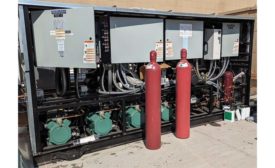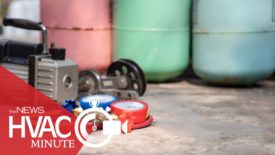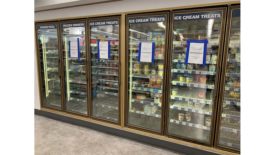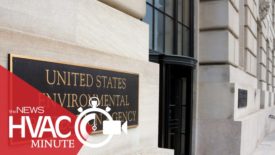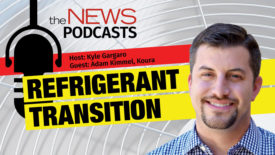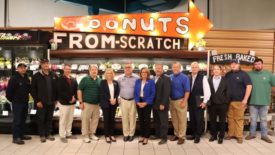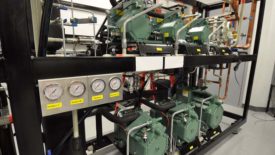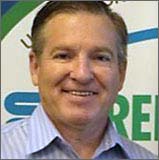Refrigerants
Breaking News, feature stories, and technical advances on the refrigeration front.
ARTICLES
Prices of HVAC Equipment Expected to Keep Rising
An HVAC Minute Video Update: July 8, 2024
Read More
FROSTlines
AI Can Help Solve Commercial Refrigeration Challenges
Tech shortages, leaky systems, and rising costs can all be mitigated with AI
Read More
EPA Proposes Rule to Mitigate Worries About Unsold VRF Inventory
An HVAC Minute Video Update: July 1, 2024
Read More
FROSTlines
NY Grocers Call For State to Pause HFC Standard
Concern is that proposed regulations could have devastating impacts on retail food industry
June 29, 2024
FROSTlines
SNAP Rule 26 Clears A2Ls for Takeoff
Companies can now start manufacturing lower-GWP commercial refrigeration equipment
Read More
FROSTlines
Refrigerant Transition Takes a Big Step in 2025
Prepare to say goodbye to the manufacture of R-410A units and hello to California’s HFC ban
Read More
FROSTlines
Mythbusting CO₂ Refrigeration Systems, Part 2
Misconceptions surround the natural refrigerant, which has been used safely for years
Read More
World Refrigeration Day Highlights Need for A2Ls
New refrigerants work harder to keep people comfortable and foods fresh
Read More
PAGES
EVENTS
Sponsored Webinar
7/13/23 to 7/13/24
Contact: Ian
Refrigeration: Air Conditioning or Commercial; Where is the Line?
Sponsored Webinar
10/18/23 to 10/18/24
Contact: Ian
The A2L Transition: Is Your HVAC Business Ready?
Sponsored Webinar
11/30/23 to 11/30/24
Contact: Ian
Refrigerant Landscape Evolution and Detection Solutions
Sponsored Webinar
12/6/23 to 12/6/24
Contact: Ian
Collaboration Brings A2L Technology to the Forefront of Commercial Refrigeration
Sponsored Webinar
12/13/23 to 12/13/24
Contact: Ian
R-32, The Clear Choice for Low GWP Refrigerants: Fact vs. Fiction
Sponsored Webinar
1/11/24 to 1/11/25
Contact: Ian
Transition to a Low-Carbon Future with A2L Refrigerants
Sponsored Webinar
3/6/24 to 3/6/25
Contact: Ian
Are A2L Refrigerants Elevating In-Room HVAC Solutions?
Copyright ©2024. All Rights Reserved BNP Media.
Design, CMS, Hosting & Web Development :: ePublishing
